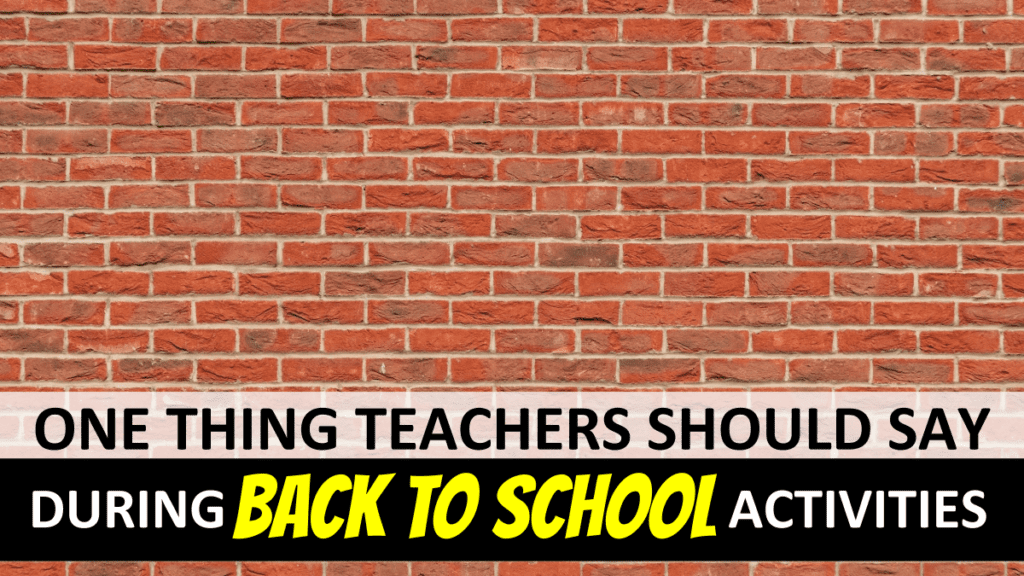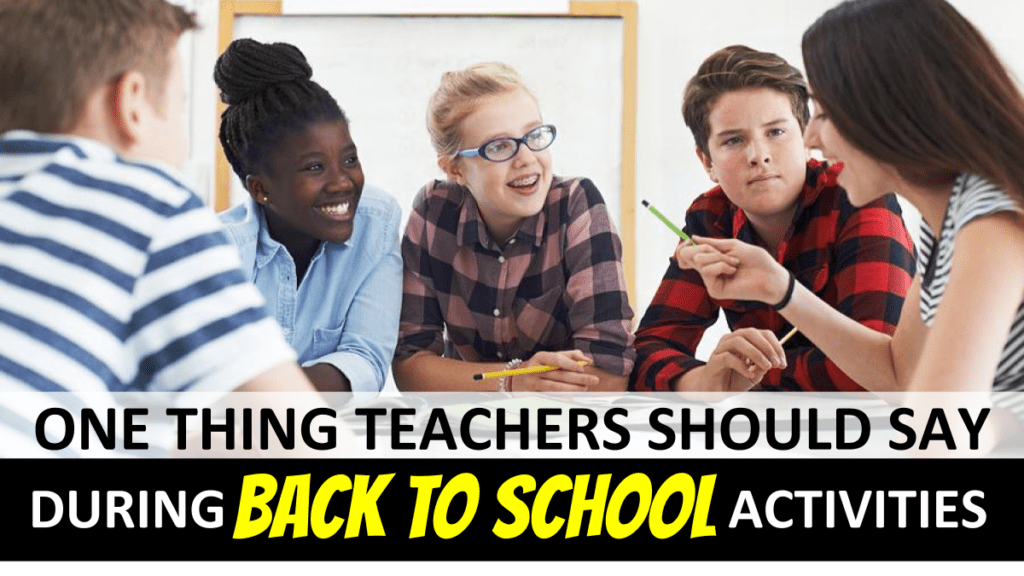Back to School Activities that help empower a Growth Mindset for Students
Back to School Activities UPDATE July 27, 2021: Jump to the list of 20 back to school growth mindset activities.
What are you going to do for first day back to school activities after covid?
The first days of school, the first days after a holiday break, or the first days after a major assignment are the perfect time to do activities that encourage a growth mindset in our students.
But Covid-19 really showed us how we live in an interconnected global community.
In a world where Covid-19 changed the way we live and learn, now is the time to teach students HOW to struggle and overcome obstacles.
Change is hard.
Change with a growth mindset? Still hard.
But, students in a growth mindset recognize that with hard work and learning from mistakes, they can improve.

Growth Mindset First Day of School activities can be a great way to kick start a learning attitude in your class.
There’s something symbolic about the first day back.
- Back to School Activities after summer holidays…
- Returning to the classroom after Covid…
- the start of a new semester or term in middle school or high school…
- the first days back after a long weekend, holiday break or March Break.
This is a fantastic opportunity to start a growth mindset in your students!
The first week back to school represents a fresh start for you and your students.
Psst… the second-best time to start building a growth mindset with your class is today.
Whether you’re reading this article before your school term begins, or whether you found us sometime mid-year, there are two things to know:
- Creating a class community of students who have a let’s try attitude is hard work. (Both for the students and teacher.)
- How we give feedback to our students can make a huge difference.
Students (and teachers) have had a whole summer to relax and melt their brains.
Sure, there might have been some challenges and obstacles that got in the way of learning at the end of last school year.
But, now, the first days and first weeks of school represent a fresh start for everybody.
We’re all coming back to school with a fresh (or mostly fresh) attitude: students, teachers, parents/guardians, principals, etc…
And the Back to School season represents a fantastic window to start building a growth mindset in your class before the going gets tough again.
How long does it take for the “looking-forward-to-school” feeling to fade and for things to return to the daily grind?
Sound harsh? A little.
But, if we’re honest, we know that school can be an uphill battle for everyone at different stages of their life.
Usually, the small talk banter during the first week of school goes like this:
Hi! How was your summer!
FIRST WEEK of SCHOOL. (Note the exclamation point of excitement!)
The small talk during the second week of school often shifts to something like this:
Where did the summer go?
SECOND WEEK of SCHOOL. Note the question mark. Sometimes this line is delivered with a period when the beginnings of despair creep in and we realize the struggle is real.
The first week of school often revolves around fun getting-to-know-you activities and the endless administrivia of forms, paperwork, letters of introduction, and setting up classroom routines and systems.
And then the homework begins, the first assessments happen, and we’re back to the daily grind. Before you know it, we’re at parent-teacher interviews and report cards.
How your students deal with the struggles depends a lot on their mindset.
Check out this FREE Back to School Goal Setting activity: The welcome back letter is epic.
Back to School Activities that empower a Growth Mindset for Students
- Use this magic phrase with your students to encourage a growth mindset.
- Acknowledge how Covid-19 impacted us. Then explore perseverance activities to help us get ready for the next challenge. Start the conversation with a Growth Mindset survey.
- Watch these goal setting steps to success videos
- Teach this goal setting powerpoint lesson to show students HOW to work smarter (and not harder)
- Use Growth Mindset posters on your bulletin boards to show students HOW to keep going (and not just motivate them to keep going)
- Use these Character Building lesson plans to introduce Growth Mindset to your students (through Sudoku)
- Play Human Bingo as a lesson in communication strategies. Students get to meet each other, but then also recognize how communication and small talk are things that are really hard to do online…
- Play Human Knot as a way to explore character
- Use this SMART goal-setting slideshow to explain how working smarter doesn’t mean working harder.
- Use this Any Time Personal Resolution worksheet. (It’s the same as a New Year’s Resolution writing activity, but with the idea that we can set goals any time… not just January 1st!)
- Talk about distance learning growth mindset strategies
- Co-create rubrics with your students
- Play Humanagrams with your students – and then read this article about the backstory of that lesson to see how long creativity can take.
- Play the Lost at Sea team-building activity and explore how we can use strategies with critical thinking
- Play this activity to explore creativity strategies and recognize everyone can be creative
- Use logic puzzles to help students learn HOW to struggle.
- Spend time teaching collaboration as a strategy and not just about working as part of a team
- Teach students that strong readers do specific things as they read. If we use specific reading comprehension strategies, we can get better. Strong readers are not just born that way. We can use a growth mindset to become stronger readers.
- Remind students that hard work is not enough. A growth mindset also means monitoring and learning from our mistakes to achieve goals.
- Just because you have a growth mindset doesn’t mean you always “win”. Just because you use communication strategies to be more assertive, doesn’t mean you always protect your boundaries and get what you want in a difficult conversation. But it does help us communicate more effectively.
- Use these handouts to introduce the 6 Cs of Education. In this class challenge, students learn about 21st Century Learning Skills in groups… while practicing the 21st Century Learning Skills at the same time…
- Use this free critical thinking challenge to see if students can spot the lie in a YouTube video. Explain how critical thinking is something we do all the time… now let’s transfer those skills to the classroom.
